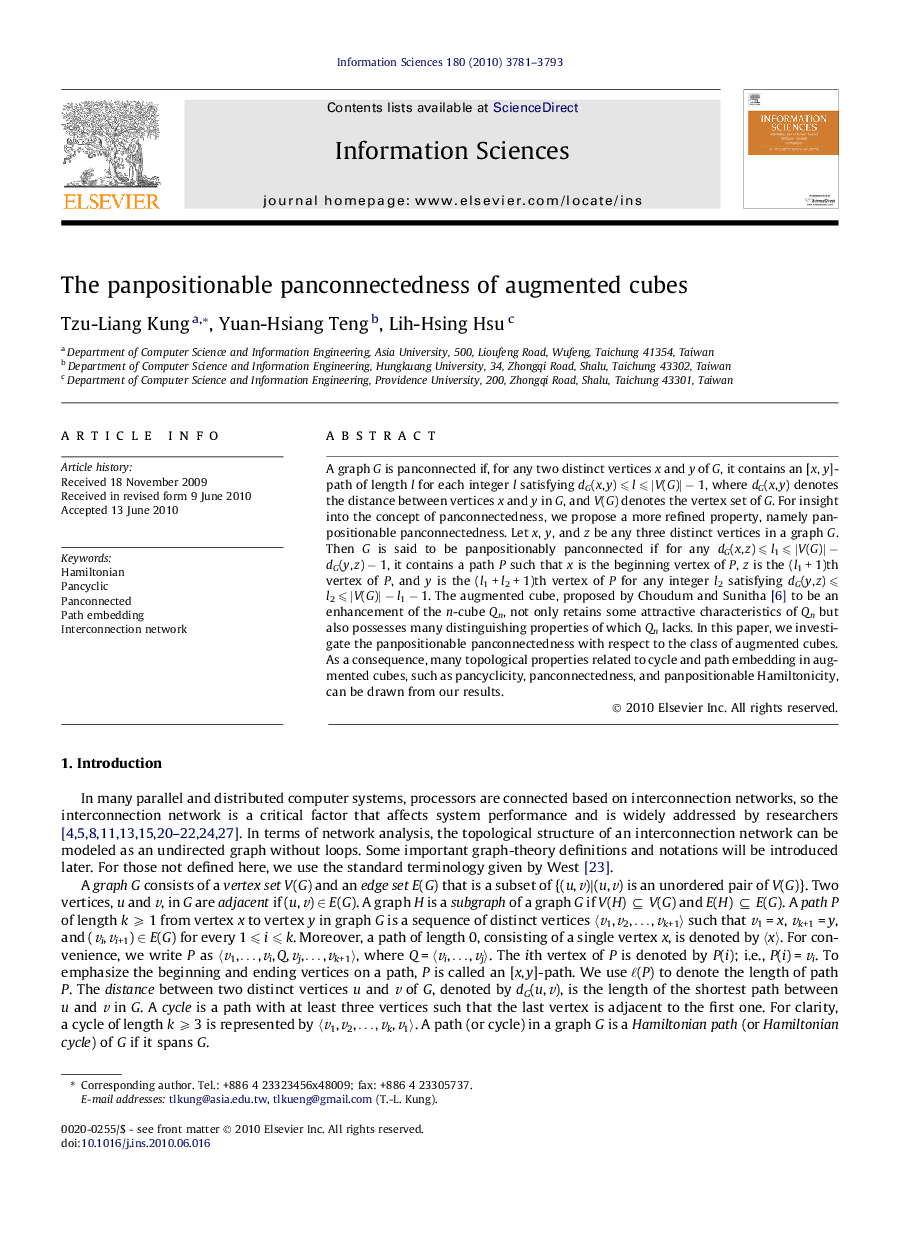| Article ID | Journal | Published Year | Pages | File Type |
|---|---|---|---|---|
| 395723 | Information Sciences | 2010 | 13 Pages |
A graph G is panconnected if, for any two distinct vertices x and y of G, it contains an [x, y]-path of length l for each integer l satisfying dG(x, y) ⩽ l ⩽ ∣V(G)∣ − 1, where dG(x, y) denotes the distance between vertices x and y in G, and V(G) denotes the vertex set of G. For insight into the concept of panconnectedness, we propose a more refined property, namely panpositionable panconnectedness. Let x, y, and z be any three distinct vertices in a graph G. Then G is said to be panpositionably panconnected if for any dG(x, z) ⩽ l1 ⩽ ∣V(G)∣ − dG(y, z) − 1, it contains a path P such that x is the beginning vertex of P, z is the (l1 + 1)th vertex of P, and y is the (l1 + l2 + 1)th vertex of P for any integer l2 satisfying dG(y, z) ⩽ l2 ⩽ ∣V(G)∣ − l1 − 1. The augmented cube, proposed by Choudum and Sunitha [6] to be an enhancement of the n-cube Qn, not only retains some attractive characteristics of Qn but also possesses many distinguishing properties of which Qn lacks. In this paper, we investigate the panpositionable panconnectedness with respect to the class of augmented cubes. As a consequence, many topological properties related to cycle and path embedding in augmented cubes, such as pancyclicity, panconnectedness, and panpositionable Hamiltonicity, can be drawn from our results.
